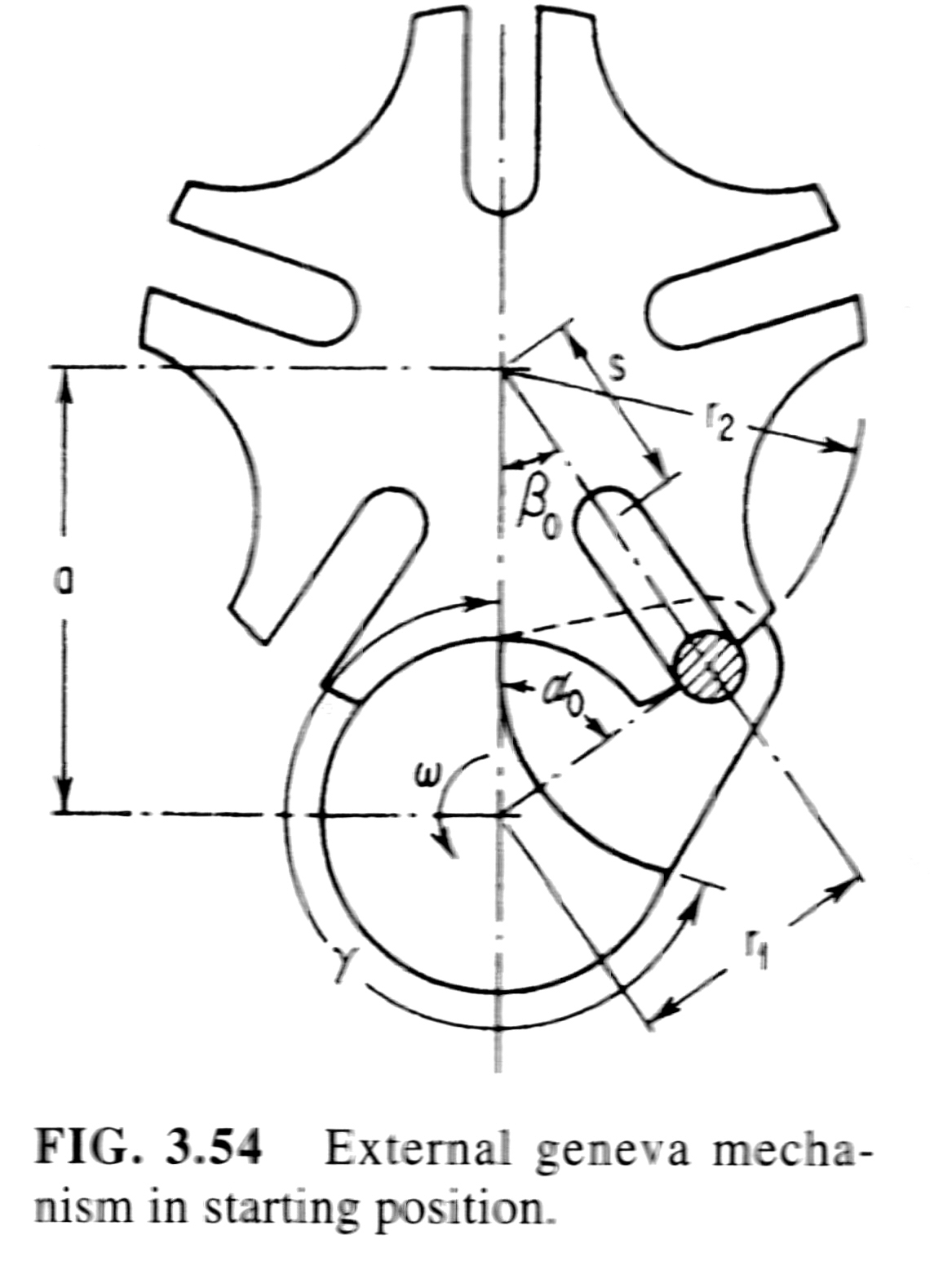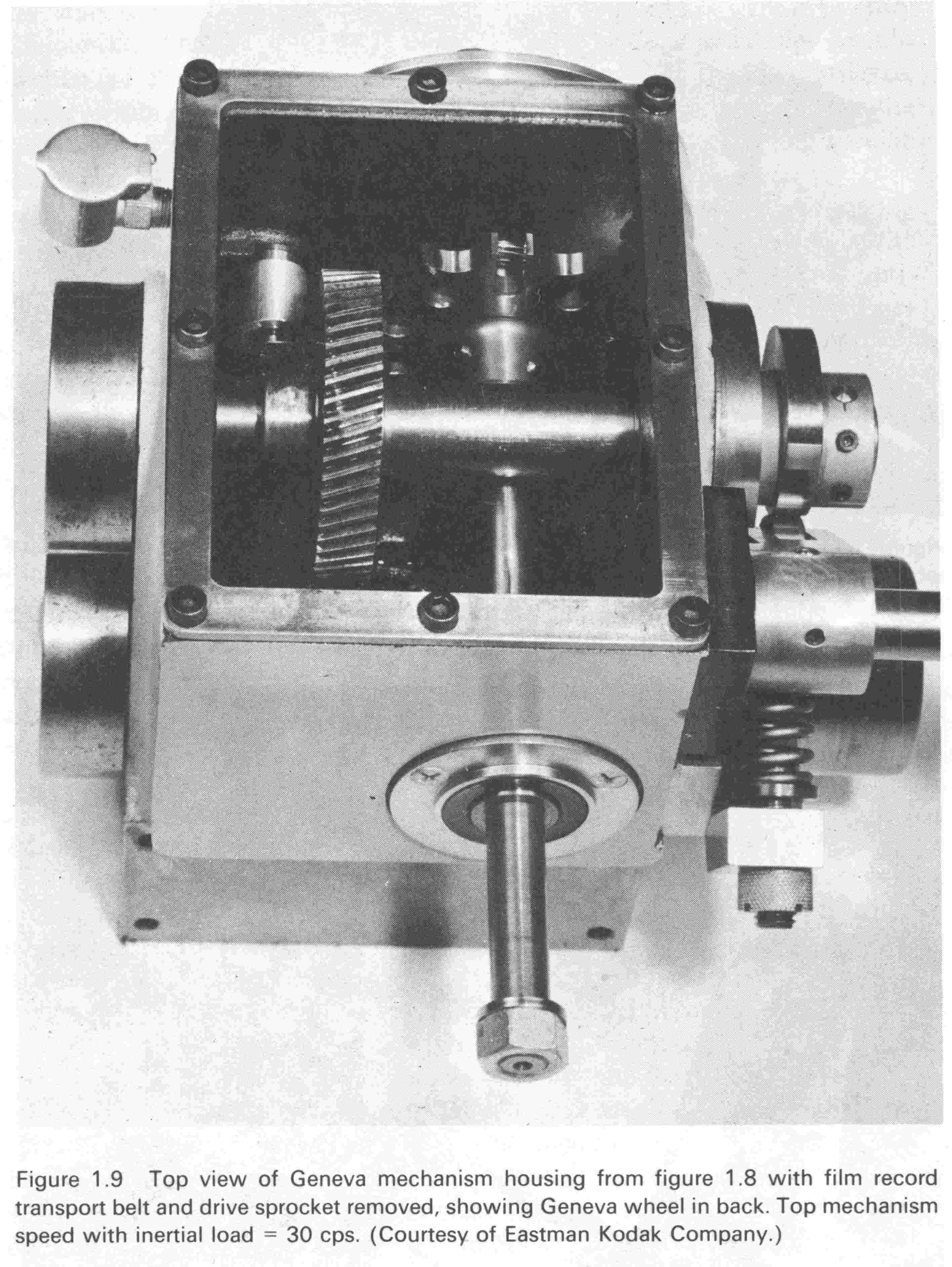
According to Brittanica.com, the Geneva mechanism was originally invented by a watch maker. The watch maker only put a limited number of slots in one of the rotating disks so that the system could only go through so many rotations. This prevented the spring on the watch from being wound too tight, thus giving the mechanism its other name, the Geneva Stop. The Geneva Stop was incorporated into many of the first film projectors used in theaters.
In Optimum Design of Mechanical Elements, Ray C. Johnson makes many references to the use of the Geneva mechanism to provide an intermittent motion the conveyor belt of a "film recording marching." (13) He also discusses several weak points in the Geneva mechanism. For instance, for each rotation of the Geneva (slotted) gear the drive shaft must make one complete rotation. Thus for very high speeds, the drive shaft may start to vibrate. Another problem is wear, which is centralized at the drive pin. Finally, the designer has no control over the acceleration the Geneva mechanism will produce.
 Also,
the Geneva mechanism will always go through a small backlash, which stops
the slotted gear. This backlash prevents controlled exact motion. (Picture
at left from Optimum Design of Mechanical Elements.)
Also,
the Geneva mechanism will always go through a small backlash, which stops
the slotted gear. This backlash prevents controlled exact motion. (Picture
at left from Optimum Design of Mechanical Elements.)